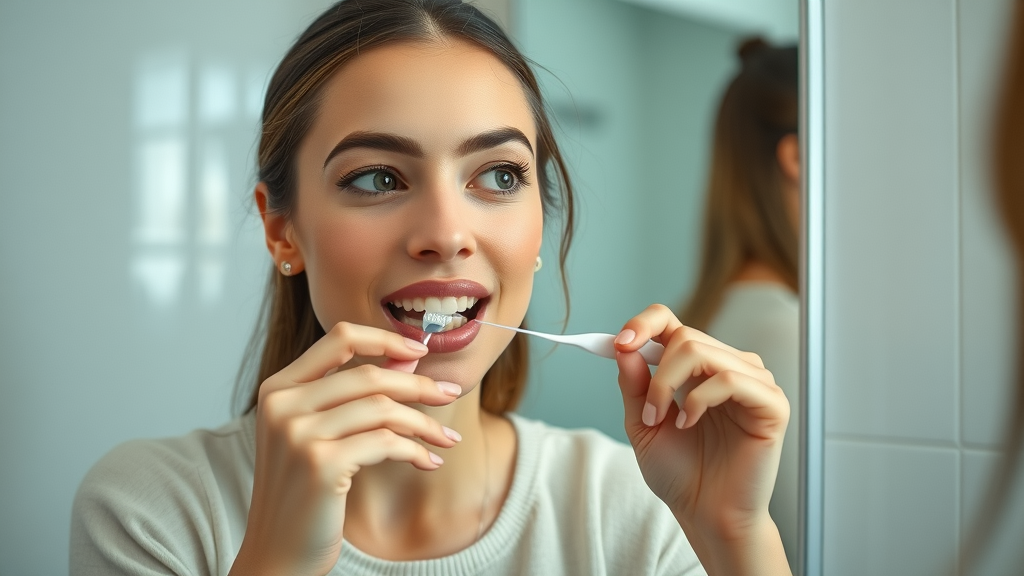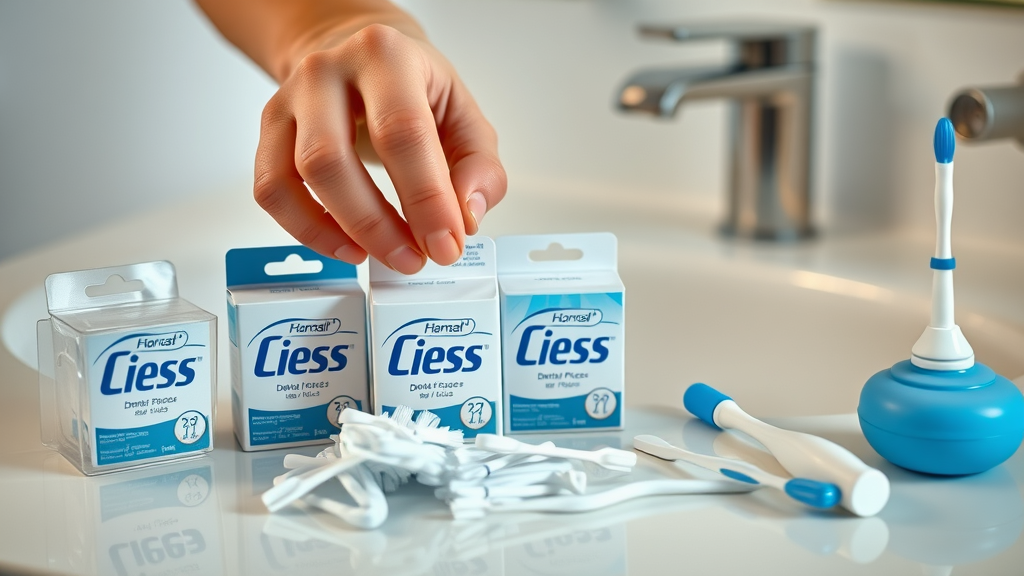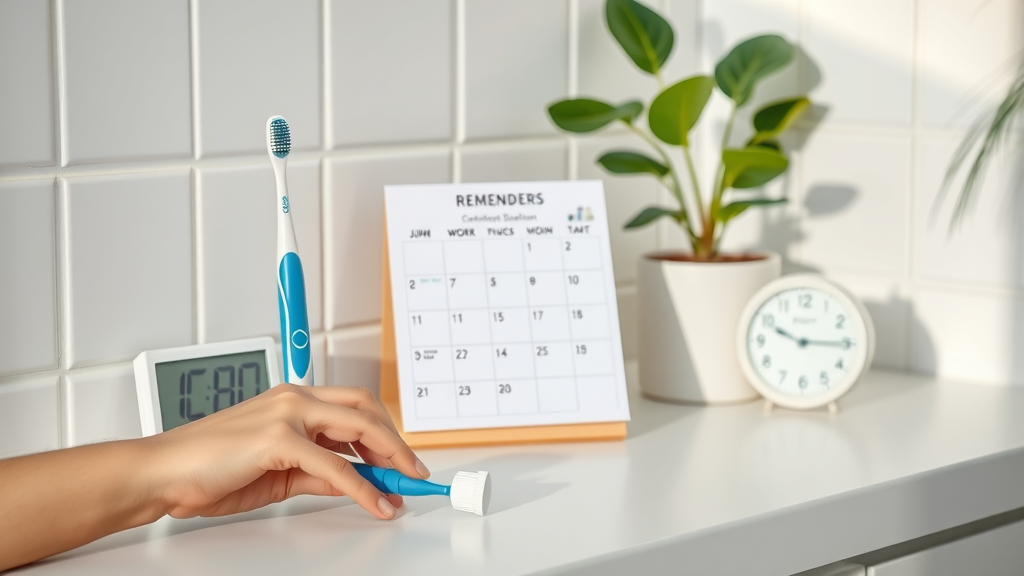Are you confident you’re flossing your teeth as often as you should, or could your routine be leaving your dental health at risk? Many people wonder if daily flossing truly matters, and whether brushing alone is enough to prevent gum disease and tooth decay. In this comprehensive guide, you’ll uncover the science behind flossing, expert recommendations, and practical strategies to ensure your oral health remains at its best—regardless of your age or dental history. Dive in to learn how a slight change in habit can transform your dental care for years to come!
Understanding How Often Should I Floss for Optimal Oral Health
Flossing frequency is a cornerstone in any oral health routine. But when considering how often should I floss , it’s important to assess your unique dental needs and habits. Flossing at least once a day is generally recommended by dental professionals and organizations, like the American Dental Association . This simple act helps remove food particles and plaque from areas your toothbrush cannot reach—particularly along the gum line and between your teeth, where harmful bacteria tend to accumulate.
Children, adults, and seniors each face unique challenges with dental care. Kids might struggle with the dexterity needed for effective flossing, so parental guidance and child-friendly floss picks can make the habit stick. For adults and older adults, consistency is the key: daily flossing dramatically reduces the risk of gum disease and tooth decay, especially as gums can become more sensitive over time. Individuals with dental bridges, braces, or orthodontic appliances may need to thread floss or use water flossers or tiny brushes to ensure thorough cleaning in hard-to-reach areas.

-
The ideal flossing frequency for different ages and dental conditions
-
The difference between flossing and brushing routines
-
How dental floss types can affect your technique
For families with young children, establishing healthy dental habits early is especially important. If you’re interested in age-specific guidance and tips for making oral care fun and effective for kids, our pediatric dentistry resources offer expert advice tailored to younger patients and their unique needs.
How Often Should I Floss: Expert Recommendations and Dental Care Standards
Expert guidance remains consistent for most people: floss your teeth once per day . This routine—and sticking to it—slows the buildup of plaque and helps preserve both the gums and tooth enamel. For people facing increased risk, such as those with established gum disease or a history of frequent cavities, dental care providers may recommend increasing your flossing frequency to twice a day. Ultimately, the goal is to keep the gum line free of lingering debris and bacteria that contribute to long-term oral health problems.
Let’s examine consensus from leading authorities. The American Dental Association not only asserts that flossing daily is crucial, but also emphasizes its role in an overall oral hygiene strategy: brush your teeth twice daily, use fluoride toothpaste , and maintain regular dental checkups. For specific populations, including those with periodontal concerns, twice daily flossing might be advised. Still, most dental care experts agree that being gentle and consistent with the time to floss is preferable to aggressive or sporadic habits.
|
|
|
Flossing Frequency Recommendations |
|
Frequency |
Recommendation |
Population |
|---|---|---|
|
Once Daily |
ADA, Dentists |
General public |
|
Twice Daily |
For gum disease patients |
Periodontal risk |
"Flossing each day is the single most important thing you can do for your oral health outside of brushing." — American Dental Association

Dental Care Essentials: How Often Should I Floss vs. Brush Your Teeth
Many people assume brushing alone is sufficient for optimal oral hygiene . However, flossing and brushing serve complementary purposes. While brushing your teeth scrubs away food particles and bacteria from the visible surface of your teeth , flossing targets stubborn debris and plaque between teeth—areas that toothbrushes simply can’t reach. Skipping flossing leaves the gum line and these tight spots vulnerable to the early stages of gum disease and tooth decay .
One common question is whether you should floss before or after brushing your teeth. Experts now generally recommend floss before brushing . This strategy clears away tightly packed food and plaque, allowing your fluoride toothpaste (and its concentration of fluoride) longer surface contact during subsequent brushing, bolstering protection against cavities and strengthening tooth enamel. The result? A more thorough clean and fresher breath.
Integrating Flossing with Your Routine: How to Brush Your Teeth and Floss Effectively
Optimizing oral health means finding a rhythm that makes flossing and brushing a habit, not a chore. The best times of day for flossing and brushing are typically after your last meal and before bedtime. This routine helps remove food particles and bacteria that accumulate throughout the day and protects your teeth and gums overnight when natural saliva production declines. For some, a quick morning floss can also be beneficial, especially if you’re prone to food sticking between teeth.
-
Best times of day for flossing and brushing
-
Should you floss before or after brushing?
-
Daily routines that support gum and tooth health
To make flossing easier, keep your dental floss or floss picks visible next to your toothbrush. This visual cue encourages a seamless oral care routine. Aim for gentle but thorough motions, curving the floss into a C-shape around each tooth, sliding below the gum line, and removing plaque without irritating tissues. Integration, consistency, and a gentle touch are all vital for maintaining teeth and gums that last a lifetime.

Choosing the Right Dental Floss and Time to Floss for Improved Oral Health
The variety of dental floss and interdental cleaners can feel overwhelming. The decision between waxed and unwaxed floss, water flossers, and dental picks comes down to your preferences and dental care needs. Waxed floss slides more easily between tight teeth and is less likely to shred, while unwaxed is thinner and can feel more natural. People with wider spaces or braces may find tiny brushes or floss picks more effective. Water flossers , which shoot a targeted stream of water, help remove plaque and food particles—especially useful if you have bridges, implants, or sensitivities.
The best time to floss generally aligns with the end of your day, ensuring you go to sleep with a clean mouth. However, for those who snack throughout the day or wear orthodontic appliances, flossing after meals helps prevent food buildup. No matter your preferred time, what matters most is consistency and proper technique. Allow yourself a few extra moments daily to floss gently along the gum line, removing food and bacteria that brushing may miss, and your smile will be healthier and brighter for years ahead.
-
Waxed vs. unwaxed floss
-
Water flossers and dental picks
-
Best time to floss—morning, night, or after meals?

Long-Term Benefits: Why Dental Flossing Should Be Part of Your Dental Care Routine
Making flossing an integral part of your dental care routine doesn’t just keep your teeth and gums in top shape—it also contributes to your overall health. Daily flossing not only removes plaque and food debris that cause bad breath and tooth discoloration, but also significantly lowers your risk for periodontal (gum) disease and dental cavities. Long-term studies show that those who floss your teeth regularly face fewer dental interventions, lower incidence of tooth loss, and improved quality of life.
Neglecting this step allows bacteria to thrive around the gum line, producing toxins that irritate and inflame tissues. Over time, this can progress to gingivitis and eventually, more severe gum disease. Modern dental research also links untreated gum inflammation to broader health concerns, such as cardiovascular issues and diabetes. In other words—making flossing part of your daily routine is a simple way to protect your smile and your systemic health for years to come.
"Those who floss daily have significantly lower risks of periodontal disease and cavities." — Dr. Brian Walsh, DDS

Common Myths About How Often Should I Floss and Evidence-Based Answers
Misinformation about how often should I floss abounds—and it can derail even the most diligent dental care routines. For example, some worry that flossing may damage their gums. The reality: flossing doesn’t damage healthy gums when done correctly. It’s only aggressive or careless flossing with sharp, repetitive snapping that poses a risk. Instead, use gentle sawing motions and avoid forcing the floss between teeth to prevent harm to delicate gum tissue.
-
Can flossing damage gums?
-
Is it ever okay to skip flossing?
-
Does mouthwash replace flossing?
Another myth is that mouthwash can replace flossing. In truth, while mouthwash can reduce bacteria and freshen breath, it cannot remove plaque or food particles from between teeth like dental floss or picks can. Skipping flossing, even occasionally, allows bacteria to linger and build up in these hard-to-reach areas, increasing the risk of gum disease and cavities. If you miss a day, resume flossing as soon as possible. Remember: daily flossing is best, but consistency over time matters most.
People Also Ask: What is the 2 2 2 rule for brushing teeth?
The "2 2 2 rule" in dental care is an easy guideline to remember for maintaining good oral hygiene . It means brushing your teeth for two minutes , twice a day, and visiting your dentist for professional cleanings and checkups two times a year . This rule helps reinforce a strong foundation for oral health by ensuring you spend enough time brushing and don’t neglect regular dental visits. Consistent application of this rule, coupled with daily flossing, forms the backbone of effective dental care.

People Also Ask: Why is flossing no longer recommended?
Some confusion exists around reports suggesting that flossing is "no longer recommended." In 2016, certain media coverage highlighted a lack of randomized clinical trials conclusively proving flossing’s long-term benefits, leading to misinterpretation. However, dental experts and the American Dental Association maintain that clinical experience and consistent evidence demonstrate flossing’s effectiveness in removing plaque and supporting oral health . The reality is: absence of strong randomized evidence does not prove ineffectiveness. Daily flossing remains a critical pillar of dental care.
People Also Ask: What is the 3-3-3 rule for teeth?
The "3-3-3 rule" is a mnemonic to help some people—and especially children—maintain proper dental care. It involves brushing your teeth three times per day, waiting three hours between meals, and spending three minutes brushing each time. While not a universally adopted standard, it underscores the importance of brushing and timing meals to reduce acid attacks on tooth enamel and improve overall oral health. Pairing these habits with daily flossing and rinsing with fluoride toothpaste can maximize dental benefits.
People Also Ask: Do gums grow back after flossing too hard?
If you floss too hard and injure your gums, the tissues can become inflamed or bleed, but they can heal with gentle care. However, it’s important to note that once gum tissue has receded due to aggressive flossing or existing gum disease , it does not spontaneously grow back. Practice gentle, proper technique—moving the floss softly against the side of each tooth and beneath the gum line—to maintain healthy, intact gums and prevent recession.

Practical Steps to Improve How Often Should I Floss: Building Optimal Dental Care Habits
Building a strong flossing habit doesn’t have to be a struggle. Set phone or calendar reminders so you never forget to floss your teeth, especially as you’re establishing the routine. Storing floss or floss picks in plain sight—right by your toothbrush—establishes a visual cue. Over time, make flossing feel less like a chore and more like a natural part of oral hygiene . Reward yourself for consistency to reinforce the behavior: track your progress, and consider treating yourself to a new toothbrush, dental floss variant, or even a dental checkup if you reach your goals!
-
Set calendar reminders for daily flossing
-
Keep floss visible next to your toothbrush
-
Reward yourself for consistency
Remember, the most successful dental care routines are simple, sustainable, and enjoyable. Pairing flossing with an activity you already do—like watching TV or listening to music—can create positive associations. As your efforts compound, you’ll notice improvements in how your gums look and feel, the freshness of your breath, and your overall dental health. Persistence pays off.
Frequently Asked Questions About How Often Should I Floss and General Dental Care
-
What happens if you floss more than once a day?
Flossing more than once daily isn’t necessarily harmful, as long as your technique is gentle and you avoid injuring your gums. However, overzealous or aggressive flossing can lead to irritation, gum recession, or bleeding. Focus on quality over quantity: once a day, performed with care, is sufficient for most individuals to maintain optimal oral health. -
Is it better to floss at night or in the morning?
While you can floss any time of day, most dental professionals recommend flossing at night before bed. This ensures your mouth is free of food debris and plaque overnight, when saliva production decreases and bacteria can thrive. Consistency is more important than timing, so choose a time that fits your schedule and stick with it! -
Can dental floss be replaced by water flossers?
Water flossers are effective for removing loose food fragments and may be helpful for people with braces or implants. However, traditional string floss remains the gold standard for disrupting plaque along the gum line and between teeth. Some people benefit from using both for a comprehensive clean. -
What if my gums bleed when I floss?
Bleeding gums may indicate gingivitis or inflammation from inconsistent flossing. If you’ve just started flossing regularly, a little bleeding is common and should improve within a week or two of steady practice. If bleeding persists, consult a dental care professional, as it may point to underlying gum disease or require a change in technique.
For a visual guide to flossing like a pro, watch educational videos on using both regular floss and floss picks to protect your teeth, gums, and oral health . These resources show step-by-step techniques, ensuring you master the movements that optimize dental care and minimize discomfort.
Watch specialized video demonstrations illustrating the right flossing approaches for every life stage. From teaching kids proper habits to adapting techniques for adults with dental appliances or seniors with sensitive gums, these guides provide tailored advice so your family’s dental care remains consistent and effective.
Summary of Key Points: Mastering How Often Should I Floss for Lasting Oral Health
-
Floss once daily for best results
-
Select the dental floss type that suits your needs
-
Gentle technique outweighs frequency in protecting gum health
Contact Johnstown Dental Care for Personalized Dental Care Solutions
Ready to take your oral health to the next level?
Contact Johnstown Dental Care at 370 West Coshocton St., Johnstown, OH 43031 .
Call (470) 967-6046 or
visit www.johnstowndentalcare.com .
Proudly serving: Johnstown, New Albany, Granville, Alexandria, Pataskala, and surrounding areas in Licking County, Franklin County, and Delaware County.
Actionable Steps:
-
Commit to daily flossing using a gentle technique.
-
Choose the right tool (waxed, unwaxed, picks, or water flosser) for your teeth and gums.
-
Establish a reminder system to build the habit.
-
Schedule regular dental checkups to personalize your oral care routine.
As you continue to refine your daily dental care habits, remember that oral health is closely linked to your overall well-being. If you ever experience persistent discomfort, sensitivity, or a sudden toothache, understanding the causes and solutions can make a significant difference in your comfort and long-term dental health. Explore our in-depth guide on managing toothaches and dental pain to gain valuable insights and proactive strategies for keeping your smile healthy and pain-free. Taking the next step in your oral care journey ensures you’re prepared for any challenge and empowers you to maintain a confident, vibrant smile for years to come.
 Add Row
Add Row  Add
Add 




Write A Comment